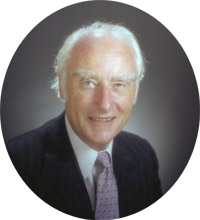博文
诺贝尔奖得主克里克谈如何选择科研课题
||
诺贝尔奖得主克里克谈如何选择科研课题
Francis Crick, together with James Watson, discovered the double-helix structure of the DNA molecular in 1953 and received the Nobel Prize for Medicine or Physiology in 1962.
Crick published an autobiography titled "What Mad Pursuit: A Personal View of Scientific Discovery" in 1988. On pp. 157 ~ 158 of that book, there is this paragraph: "Curiously enough, in biology it is sometimes those basic problems that look impossibly difficult to solve which yield the most easily. This is because there may be so few even remotely possible solutions that eventually one is led inexorably to the correct answer. The biological problems that are really difficult to unscramble are those where there is almost an infinity of plausible answers and one has painstakingly to attempt to distinguish between them."
Obviously, the lesson that Crick was teaching in the above paragraph is this: Do not be afraid of attempting to crack the most fundamental problems in your research field!
I found that someone had uploaded "What Mad Pursuit" on sina.com's file sharing site. If you are interested in reading the book, please go to the following link to download the book:
http://ishare.iask.sina.com.cn/f/6458646.html
(The file is in .DJVU format. If you don't have a DJVU reader on your computer, do a Google search and then download and install one for yourself.)
https://m.sciencenet.cn/blog-322380-570036.html
上一篇:诺贝尔物理学奖得主盖尔曼谈如何获得创造性想法
下一篇:人为什么长两只眼睛?
Francis Crick, together with James Watson, discovered the double-helix structure of the DNA molecular in 1953 and received the Nobel Prize for Medicine or Physiology in 1962.
Crick published an autobiography titled "What Mad Pursuit: A Personal View of Scientific Discovery" in 1988. On pp. 157 ~ 158 of that book, there is this paragraph: "Curiously enough, in biology it is sometimes those basic problems that look impossibly difficult to solve which yield the most easily. This is because there may be so few even remotely possible solutions that eventually one is led inexorably to the correct answer. The biological problems that are really difficult to unscramble are those where there is almost an infinity of plausible answers and one has painstakingly to attempt to distinguish between them."
Obviously, the lesson that Crick was teaching in the above paragraph is this: Do not be afraid of attempting to crack the most fundamental problems in your research field!
I found that someone had uploaded "What Mad Pursuit" on sina.com's file sharing site. If you are interested in reading the book, please go to the following link to download the book:
http://ishare.iask.sina.com.cn/f/6458646.html
(The file is in .DJVU format. If you don't have a DJVU reader on your computer, do a Google search and then download and install one for yourself.)
https://m.sciencenet.cn/blog-322380-570036.html
上一篇:诺贝尔物理学奖得主盖尔曼谈如何获得创造性想法
下一篇:人为什么长两只眼睛?
